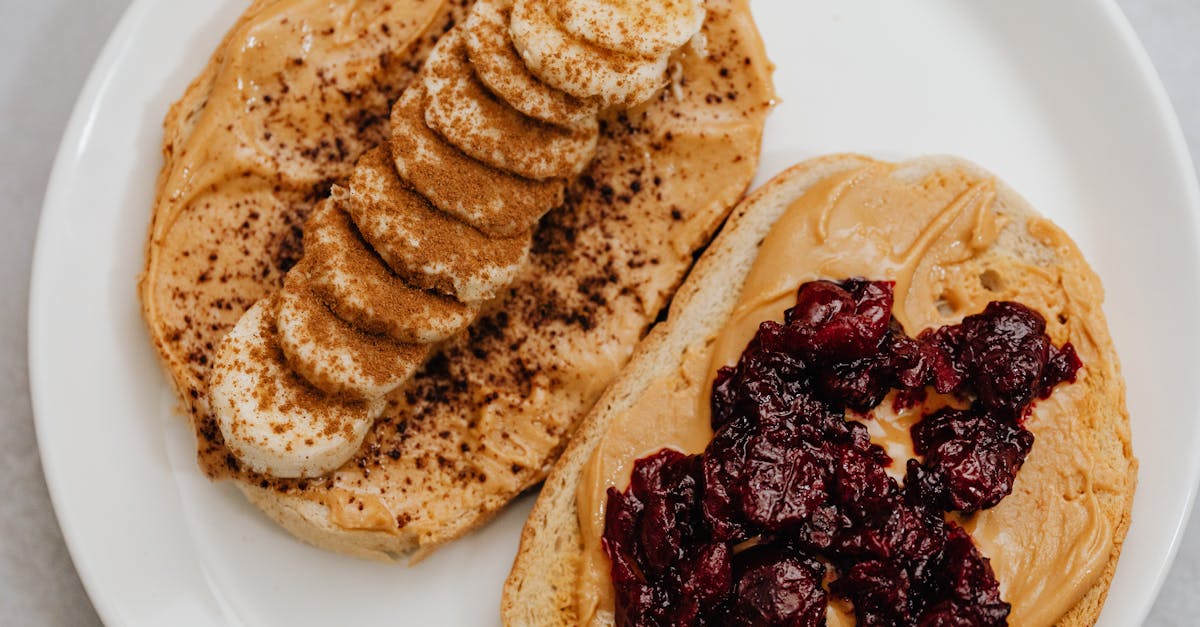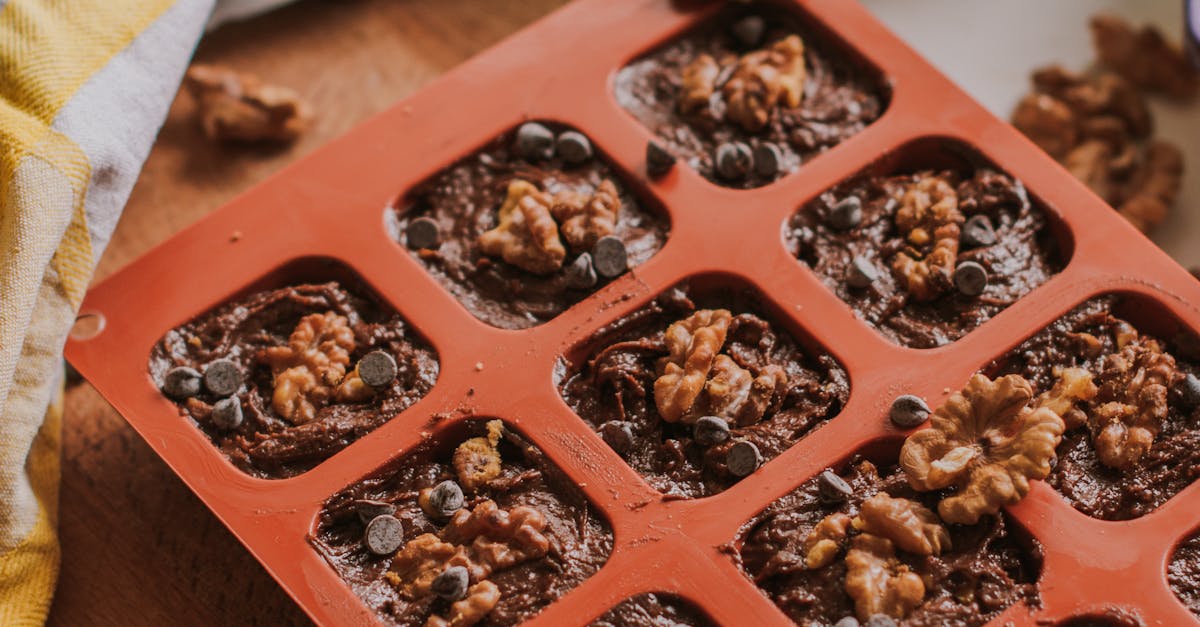Let’s be honest, we all have a sweet tooth. That irresistible craving for something sugary can strike at any time, leaving us reaching for the nearest candy bar or sugary drink. But what if we told you there’s a way to satisfy your sweet cravings without the guilt and the crash? This isn’t about deprivation; it’s about smart swaps and delicious alternatives that nourish your body and delight your taste buds. In this article, we’ll explore the science behind sugar cravings, uncovering why we crave it and how to manage those intense urges. Then, we’ll dive into five seriously indulgent treat recipes that are surprisingly healthy, packed with whole foods, and satisfyingly sweet. From dark chocolate avocado mousse to homemade fruit leather, we’re sharing recipes that will make you rethink what a ‘healthy treat’ actually means. Get ready to break free from the sugar rollercoaster and discover a sweeter, healthier you!
Key Insights: Sweetening Your Life the Healthy Way
- Understanding Sugar Cravings: Sugar triggers dopamine release, creating a cycle of cravings. Managing cravings involves mindful eating and identifying emotional triggers.
- Healthy Sugar Alternatives: Explore natural sweeteners like honey and maple syrup (in moderation) and stevia, understanding their glycemic impact.
- Delicious & Healthy Treats: Indulge guilt-free with recipes like dark chocolate avocado mousse, berry nice cream, and baked apples—packed with nutrients and flavor.
- Building Healthy Habits: Gradually reduce sugar intake, focus on whole foods (fruits, vegetables, whole grains), and listen to your body’s hunger and fullness cues.
- Sustainable Lifestyle Changes: Making healthy choices is a journey, not a race. Celebrate successes, learn from setbacks, and find a balance that works for you long-term.
1. The Sweet Truth: Why We Crave Sugar (and How to Manage It)
Okay, let’s talk sugar cravings. Why do we suddenly get that intense urge for something sweet? It’s not just willpower; it’s biology! Sugar, especially refined sugar, triggers a dopamine rush in your brain – that’s the feel-good neurotransmitter. Your brain learns to associate sugar with pleasure, making you crave more. It’s a vicious cycle: sugar rush, dopamine hit, sugar crash, and then… you guess it, another craving. But don’t worry, you’re not doomed to a life of sugar addiction.
One key strategy is understanding what’s driving your cravings. Are you truly hungry, or is it stress, boredom, or even just a habit? Mindful eating plays a huge role here. Paying attention to your body’s hunger cues helps you differentiate between actual hunger and emotional eating. Before reaching for that sugary treat, ask yourself if you’re really hungry, or if you’re just looking for a mood boost.
Fortunately, there are healthier ways to satisfy your sweet tooth. Swap refined sugar for natural alternatives like honey, maple syrup, or stevia, being mindful of portion sizes. Prioritize whole, unprocessed foods – fruits, vegetables, and whole grains – which provide sustained energy and help regulate blood sugar levels, reducing those intense cravings. Gradually reducing your sugar intake will also help retrain your taste buds and lessen your dependence on sugary foods. It’s all about making gradual, sustainable changes rather than going cold turkey.
The Biology of Sugar Cravings
So, what’s actually happening in your body when you crave sugar? It’s more complex than just a simple
Healthy Alternatives to Refined Sugar
Let’s face it, sometimes you just need a little sweetness. But ditching refined sugar doesn’t mean sacrificing flavor! Plenty of natural alternatives can satisfy your sweet tooth without the same blood sugar rollercoaster. Honey, maple syrup, and stevia are popular choices, each with its own unique profile and nutritional value. Honey, for instance, offers a complex flavor and contains trace amounts of vitamins and minerals, though it’s still primarily sugar. Maple syrup, another natural option, also boasts some minerals and antioxidants, but again, it’s mostly sugar.
The key difference lies in their glycemic index (GI), a measure of how quickly a food raises your blood sugar. Compared to refined sugar, honey and maple syrup generally have a lower GI, meaning a gentler rise in blood sugar. However, they are still sugars and should be consumed in moderation. Stevia, on the other hand, is a non-nutritive sweetener, meaning it contains virtually no calories or carbohydrates. This makes it an attractive option for those watching their calorie intake, but some people find its intense sweetness less appealing compared to traditional sweeteners.
Ultimately, the best alternative depends on your individual preferences and dietary needs. Consider a linked article (insert link here) for a detailed comparison of various natural sweeteners and their nutritional profiles. Remember that moderation is key, even with natural sweeteners. Prioritizing whole, unprocessed foods rich in fiber and nutrients will keep your blood sugar stable and your cravings in check – a much better approach than relying solely on sweeteners, no matter how natural they might be.
Mindful Eating Strategies for Sugar Cravings
Conquering sugar cravings isn’t about willpower alone; it’s about understanding your relationship with food. Mindful eating is a powerful tool for managing cravings. It’s all about paying attention to your body’s signals – hunger, fullness, and even emotional triggers. Before reaching for that sugary snack, pause and ask yourself: Am I truly hungry, or am I bored, stressed, or sad? Often, we mistake emotional hunger for physical hunger, leading us to seek comfort in sugary treats.
One key aspect of mindful eating is portion control. Even healthy treats, like fruit, can contribute to sugar cravings if consumed in excessive amounts. Start small. Instead of a whole bowl of berries, try a handful. Notice the taste, texture, and satisfaction from that smaller portion. This helps train your brain to recognize and appreciate smaller quantities, reducing the urge to overindulge. If you’re having trouble determining appropriate portion sizes, consider using smaller plates and bowls.
Beyond portion control, emotional awareness is vital. Identify your triggers. Do you crave sugar when you’re stressed? Bored? Keep a food journal to track your cravings and notice any patterns. Then, develop coping mechanisms for those triggers. Instead of reaching for a candy bar when stressed, try going for a walk, listening to music, or practicing deep breathing. By building this emotional awareness and finding healthier ways to cope, you can break the cycle of using sugar as an emotional crutch and establish a healthier, more balanced relationship with food. A linked article (insert link here) offers more detailed strategies on practicing mindful eating.
2. Indulgent Treat #1: Dark Chocolate Delights
Let’s talk dark chocolate – the decadent, rich treat that’s surprisingly good for you! Forget those sugary milk chocolate bars; we’re focusing on dark chocolate with a high cocoa content (70% or higher). This isn’t just about satisfying your sweet tooth; it’s about indulging in a treat packed with health benefits. Dark chocolate is a powerhouse of antioxidants, particularly flavanols, which are associated with various health advantages. These antioxidants help protect your cells from damage caused by free radicals, potentially reducing the risk of chronic diseases.
Research has linked dark chocolate consumption to improved heart health, potentially lowering blood pressure and improving blood flow. It may also have a positive impact on brain function, potentially boosting mood and cognitive performance. However, it’s crucial to remember that these benefits are associated with dark chocolate, not milk chocolate or other heavily processed versions. Those are typically loaded with added sugar and unhealthy fats, negating any potential health benefits.
Choosing the right dark chocolate is key. Look for bars with a high cocoa percentage (70% or higher) and minimal added sugar. Check the ingredient list – it should be short and straightforward. The higher the cocoa content, the more intense the flavor and the greater the concentration of beneficial compounds. So, go ahead and indulge in a small square or two of high-quality dark chocolate. It’s a delicious and surprisingly healthy way to satisfy your sweet cravings.
Dark Chocolate’s Health Benefits
Dark chocolate isn’t just a delicious treat; it’s a surprisingly healthy indulgence, thanks to its rich concentration of flavanols – a type of antioxidant. These potent compounds work wonders in your body, fighting off those pesky free radicals that damage cells and contribute to aging and disease. This antioxidant action is a big part of why dark chocolate is linked to so many potential health benefits. Studies have shown a correlation between dark chocolate consumption and improved cardiovascular health.
One of the key ways dark chocolate benefits your heart is by improving blood flow. Flavanols help relax blood vessels, reducing blood pressure and improving the overall efficiency of your circulatory system. This can contribute to a reduced risk of heart disease and stroke. Beyond heart health, some research suggests that dark chocolate may also offer cognitive benefits. The flavanols in dark chocolate may improve blood flow to the brain, potentially enhancing memory and cognitive function. It’s important to note that this area of research is still developing, and more studies are needed to confirm these effects fully.
While dark chocolate offers these potential benefits, remember that moderation is key. The positive effects are primarily associated with dark chocolate with a high cocoa content (70% or higher) and minimal added sugar. Overdoing it can still lead to unwanted weight gain and other negative consequences. So enjoy a small square or two of high-quality dark chocolate as part of a balanced diet – a truly guilt-free indulgence! For a more detailed look at the research behind dark chocolate’s health benefits, check out this study: (insert link here)
Choosing the Right Dark Chocolate
Navigating the world of dark chocolate can feel overwhelming, with countless brands and varieties available. But choosing the right dark chocolate is crucial to maximizing its health benefits and enjoying its rich flavor. The most important factor to consider is the cocoa percentage. Aim for dark chocolate with a cocoa content of 70% or higher. The higher the percentage, the less added sugar and other ingredients it’s likely to contain, meaning more of those beneficial flavanols and less of the stuff you want to avoid.
Beyond the cocoa percentage, pay close attention to the ingredient list. It should be short and straightforward, ideally containing only cocoa mass, cocoa butter, and perhaps a small amount of sugar. Avoid bars with lengthy ingredient lists containing artificial sweeteners, preservatives, or other additives. The fewer ingredients, the better. Also, consider the source of the cocoa beans. Look for brands that prioritize ethically sourced and sustainably grown cocoa. Supporting sustainable practices ensures that the chocolate you’re enjoying is both delicious and environmentally friendly.
Finally, trust your senses! The best dark chocolate has a rich, complex flavor that’s not overly bitter or overly sweet. Take a small bite and let the flavor unfold on your palate. Does it have a pleasing bitterness balanced with natural sweetness? Does it have a smooth texture? If the answer is yes, you’ve probably found a high-quality dark chocolate worth savoring. Remember, a little bit goes a long way; focus on quality over quantity for a truly satisfying and healthy experience.
Recipe Idea: Dark Chocolate Avocado Mousse
This dark chocolate avocado mousse is a game-changer – rich, decadent, and surprisingly healthy! The creamy texture comes from ripe avocados, which add healthy fats and a naturally smooth consistency. You won’t even taste the avocado; it just enhances the chocolate’s richness. This recipe is super simple and requires minimal ingredients, making it perfect for a quick and satisfying dessert.
Ingredients: * 1 ripe avocado * 1/2 cup high-quality dark chocolate (70% cacao or higher), melted * 2 tablespoons unsweetened cocoa powder * 2 tablespoons milk (dairy or non-dairy) * 1-2 tablespoons sweetener of your choice (maple syrup, honey, or stevia) * 1 teaspoon vanilla extract * Pinch of salt
Instructions: 1. Combine all ingredients in a food processor or blender and blend until completely smooth and creamy. 2. Refrigerate for at least 30 minutes to allow the mousse to chill and set. 3. Serve chilled and enjoy! Optional: Garnish with fresh berries, cocoa powder, or a sprinkle of chopped nuts.
This mousse is surprisingly filling and satisfying, thanks to the healthy fats from the avocado. It’s a fantastic way to enjoy a decadent treat while also sneaking in some healthy fats and antioxidants. The recipe is easily customizable – adjust the sweetener to your liking, and feel free to experiment with different add-ins, such as espresso powder for a mocha twist or a pinch of cinnamon for a warm spice note.
3. Indulgent Treat #2: Berrylicious Nice Cream
Ice cream cravings hitting hard? There’s a delicious and healthy alternative that’s just as satisfying: nice cream! Made with frozen fruit and nothing else (or just a few simple additions), nice cream is a refreshing and guilt-free way to enjoy a frozen treat. It’s naturally sweet, packed with vitamins and antioxidants from the fruit, and a fraction of the calories and sugar of traditional ice cream. The best part? It’s super simple to make!
The Power of Frozen Berries
Berries – those tiny bursts of sweetness – are nutritional powerhouses! Packed with vitamins, minerals, and antioxidants, they’re a fantastic addition to any balanced diet. Think blueberries, strawberries, raspberries, blackberries – each brimming with goodness. They’re a great source of vitamin C, a powerful antioxidant that boosts your immune system and protects your cells from damage. They also contain vitamin K, essential for blood clotting and bone health, and manganese, important for metabolism and bone health.
Easy Nice Cream Recipe
This recipe is ridiculously simple, requiring only one main ingredient: frozen fruit! The key is using fruit that’s fully frozen – this creates the creamy texture. You can use any combination of your favorite berries (strawberries, blueberries, raspberries, blackberries), bananas, or even mangoes. The more ripe the fruit was before freezing, the sweeter the nice cream will be.
Ingredients: * 2 cups frozen fruit (berries are great, but bananas work well too!)
Instructions: 1. Add the frozen fruit to a food processor or high-powered blender. 2. Process until the fruit is completely broken down and has a smooth, creamy consistency. This may take a few minutes, and you may need to stop and scrape down the sides a few times. If it’s too thick, add a splash of your favorite milk (dairy or non-dairy). 3. Serve immediately for a softer consistency, or freeze for a firmer texture. Get creative and add extras like a squeeze of lemon juice, a dash of vanilla extract, or a sprinkle of cocoa powder for extra flavor!
That’s it! A truly simple and ridiculously delicious healthy treat. The beauty of this recipe lies in its flexibility; experiment with different fruits and flavor combinations to create your perfect nice cream masterpiece. Frozen bananas create a particularly creamy base, similar to traditional ice cream, while berries add a vibrant tartness.
Variations and Flavor Combinations
The beauty of nice cream is its endless versatility! Once you master the basic recipe, the possibilities are truly limitless. Feel free to experiment with different fruits to create unique flavor combinations. Tropical fruits like mango and pineapple add a sweet and tangy twist, while stone fruits like peaches and nectarines offer a more delicate sweetness. Mixing berries creates a vibrant and complex flavor profile, and you can even add chunks of your favorite fruit for extra texture.
4. Indulgent Treat #3: Baked Apples with Cinnamon & Nuts
Baked apples are the ultimate cozy dessert – warm, comforting, and naturally sweet. This recipe emphasizes whole foods, focusing on the delicious flavors of apples, cinnamon, and nuts. It’s a perfect autumnal treat, but honestly, it’s enjoyable any time of year. Baked apples are incredibly simple to make, requiring minimal ingredients and effort, yet the result is a dessert that feels both indulgent and wholesome.
The Benefits of Apples and Cinnamon
Apples aren’t just a crunchy, juicy snack; they’re a nutritional powerhouse! They’re an excellent source of fiber, which aids digestion, keeps you feeling full, and helps regulate blood sugar levels. Apples also contain various vitamins and minerals, including vitamin C, potassium, and antioxidants. These antioxidants help protect your cells from damage caused by free radicals, reducing the risk of chronic diseases. The fiber content in apples also helps promote a healthy gut microbiome, which plays a vital role in overall health.
Simple Baked Apple Recipe
This baked apple recipe is incredibly simple, perfect for a cozy autumn evening or any time you’re craving a warm, comforting treat. You can easily customize it to your liking with different spices and nuts. The key is to use firm, tart apples that hold their shape well during baking. Granny Smith or Honeycrisp apples are excellent choices.
Ingredients: * 2-4 medium apples (Granny Smith or Honeycrisp recommended) * 1-2 tablespoons cinnamon * 1/4 cup chopped nuts (walnuts, pecans, or almonds) * 1-2 tablespoons maple syrup or honey (optional, for extra sweetness) * 1 tablespoon butter or coconut oil (optional)
Instructions: 1. Preheat oven to 375°F (190°C). 2. Wash and core the apples, leaving about 1/2 inch at the bottom intact. 3. Fill the center of each apple with cinnamon, nuts, and optional maple syrup/honey and butter/oil. 4. Place the apples in a baking dish and add about 1/2 inch of water to the bottom of the dish to prevent sticking and keep the apples moist. 5. Bake for 30-45 minutes, or until the apples are tender. You can check for doneness by piercing the apples with a fork. If they are easily pierced, then they are done. 6. Serve warm and enjoy! Optional: Add a scoop of vanilla ice cream or whipped cream for extra indulgence.
This simple recipe allows for endless variations. Experiment with different spices like nutmeg or cardamom, add raisins or dried cranberries for extra sweetness and texture, or try different types of nuts for unique flavor profiles. Enjoy the warmth and deliciousness of this simple baked treat!
5. Indulgent Treat #4: Greek Yogurt with Honey and Granola
Looking for a quick, satisfying, and protein-packed sweet treat? Look no further than Greek yogurt with honey and granola! This simple combination delivers a delicious and healthy dessert that keeps you feeling full and energized. Greek yogurt is a fantastic source of protein, essential for building and repairing tissues, keeping you feeling satiated, and supporting muscle growth. It’s also a good source of calcium and probiotics, beneficial for gut health.
Benefits of Greek Yogurt and Granola
Greek yogurt is a protein powerhouse! Compared to regular yogurt, Greek yogurt has a much higher protein content, making it a filling and satisfying snack or meal component. This extra protein helps you feel fuller for longer, reducing cravings and supporting muscle growth and repair. Protein is essential for various bodily functions, and Greek yogurt provides a delicious and convenient way to increase your daily intake. Beyond protein, Greek yogurt is also a good source of calcium, crucial for strong bones and teeth, and probiotics, beneficial for gut health.
Building Your Perfect Yogurt Parfait
Creating the perfect yogurt parfait is all about layering textures and flavors to create a delightful and satisfying experience. Start with a base of creamy Greek yogurt—the higher the protein content, the more filling your parfait will be. Next, add your favorite granola for a satisfying crunch. Look for granolas that are lower in added sugar and higher in whole grains for a healthier option. Consider the type of granola you choose – some are sweeter than others, impacting the overall sweetness of your parfait.
6. Indulgent Treat #5: Homemade Fruit Leather
Homemade fruit leather is a fantastically healthy and naturally sweet snack that’s surprisingly easy to make. It’s a fun project for the whole family and a delicious way to use up extra ripe fruit. Think of it as a healthier, more natural alternative to gummy candies—packed with vitamins, fiber, and flavor, and without all the artificial ingredients and added sugars.
Making Fruit Leather at Home
Making fruit leather at home is easier than you might think! It’s a fantastic way to use up overripe fruit that might otherwise go to waste, and the result is a naturally sweet and chewy treat that’s far healthier than store-bought alternatives. The basic process involves pureeing your chosen fruit, spreading it thinly onto a dehydrator tray or baking sheet lined with parchment paper, and then dehydrating it until it reaches a leathery consistency.
Tips for Success
Choosing the right fruits is key to achieving delicious and successful fruit leather. Fruits that are naturally high in pectin, like apples and berries, work particularly well because pectin helps the fruit leather set properly. Avoid fruits that are too watery, like watermelon or tomatoes, as they may not dehydrate properly and could result in a sticky, rather than leathery, consistency. Start with ripe but not overripe fruit – you want the fruit to be sweet and flavorful, but not mushy.
7. Breaking the Sugar Habit: Long-Term Strategies
Breaking the sugar habit isn’t about deprivation; it’s about making gradual, sustainable changes. Start by slowly reducing your sugar intake. Don’t try to eliminate it all at once; that’s a recipe for failure. Instead, focus on making small, manageable changes each week. For example, try swapping sugary drinks for water or unsweetened tea, or reducing the amount of sugar you add to your coffee or cereal.
Gradual Sugar Reduction
The key to successfully reducing your sugar intake is to do it gradually. Going cold turkey often leads to intense cravings and ultimately, failure. Instead, start by identifying your biggest sources of added sugar. This might be sugary drinks, processed foods, or desserts. Once you’ve identified these culprits, start making small substitutions. For example, swap your usual sugary soda for sparkling water with a squeeze of lemon or lime. Or, try using less sugar in your coffee or tea. You might be surprised how quickly your taste buds adjust.
Focus on Whole Foods
Shifting your focus to whole, unprocessed foods is a game-changer when it comes to reducing sugar cravings and improving your overall health. Whole foods, like fruits, vegetables, and whole grains, are naturally low in added sugar and packed with fiber, vitamins, and minerals. Fiber helps regulate blood sugar levels, preventing those intense sugar crashes that lead to cravings. Fruits and vegetables are naturally sweet, offering a satisfying sweetness without the added sugars found in processed foods.
Listen to Your Body
Learning to listen to your body’s hunger and fullness cues is crucial for establishing a healthy relationship with food and managing cravings. Often, we eat out of habit, boredom, or stress, rather than true hunger. Before reaching for a snack, take a moment to check in with yourself. Are you truly hungry, or are you just looking for a distraction or emotional comfort? Pay attention to the physical sensations of hunger – a rumbling stomach, a slight headache, low energy.



